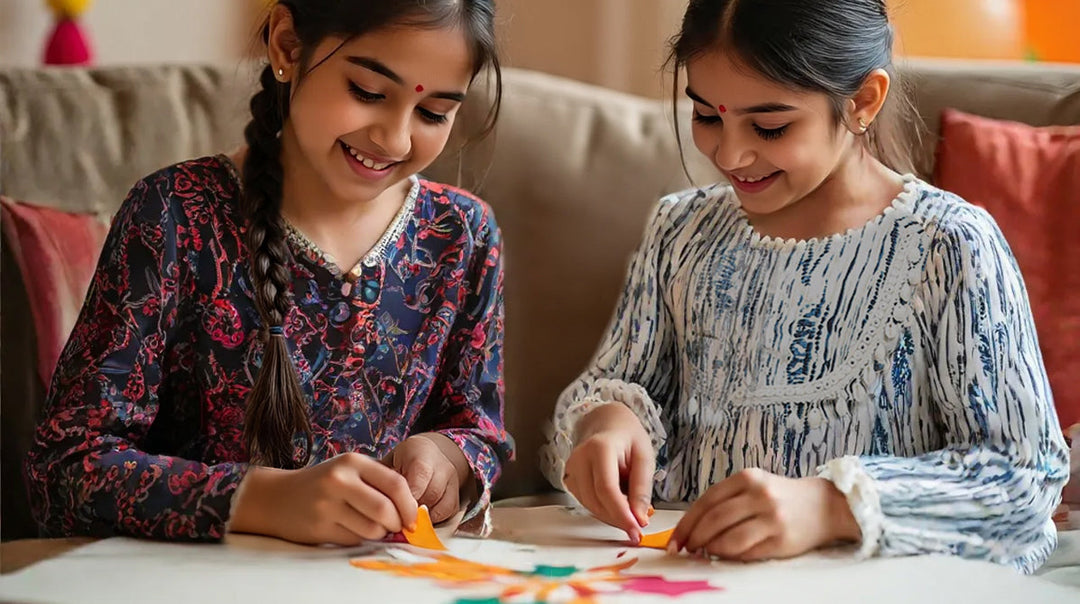Educational Games and Activities for Kids

Do you ever wonder what the best way for kids to learn new concepts is? Young children, who are easily bored and endlessly curious, benefit from learning practically. This is why educational games and activities are so effective in imparting knowledge. Such activities or games encourage hands-on learning, thus helping boost a child’s critical thinking skills, memory, and problem-solving abilities as well as motivation to learn further.
Benefits of Practical Learning
There are numerous benefits of learning by doing. Children become smarter as a result of direct and practical learning in many ways.
It is more effective
Learning by doing is often more effective than learning merely through theory. This is because practical learning tends to stand out in a child’s brain and helps them recall information through repetition.
It helps in memory recall
As children engage physically as well as mentally in numerous ways, the memories associated with that particular activity or game strengthen, making practical learning effective for long-term recall.
Creates a love for learning
Children are naturally curious. If they engage in learning in a way that is fun to them, this will make the process of acquiring new knowledge an enjoyable activity. This will inculcate a love for learning which will last lifelong.
Helps develop problem-solving activities
Rather than being merely told the answer, children learning practically have to apply the solutions or even arrive at them on their own. This helps develop critical thinking skills that aid in problem-solving ability, ultimately making those kids smarter.
6 Educational Games to Inspire Children to Learn
There are various types of games that can help boost a child’s learning ability. Each game helps with different aspects- such as language, memory, concentration, logic or strategy. Some common educational games include:
Sudoku
Sudoku is a grid consisting of nine squares on each side. Players have to fill the boxes with the digits 1 to 9 in such a way that each number appears once either horizontally, vertically or in a square. This game, which originated in the 19th century, is popular among both kids and adults due to the combination of logic and fun it provides.
Sudoku is often played digitally or on paper. Apps or printable sheets for Sudoku can be found online. It boots concentration, improves patience, improves memory and leads to relaxation.
Typing Game
Typing games usually involve correctly entering letters, words, or sentences displayed on the screen by typing them via the keyboard. There are various typing games available online that aim to help children develop the essential skill of typing for the digital age. It is a fun and easily accessible game.
Being able to type accurately and quickly will help the child immensely both academically and professionally. These games help improve letter recognition, cognitive memory and reflexes.
Mad Libs
Mad Libs refers to a word game. A player is prompted to enter a list of words substituting for blanks in a story. The instructions for what type of word are usually something like- noun, verb, adverb, adjective, type of fruit or any other category. The resulting story is humorous and nonsensical, meant to capture a kid’s imagination.
This simple game helps in the development of a child’s grammar in an effortless, easy and fun way. It improves their language skills and boosts their creativity because they have to think of words quickly.
Jigsaw Puzzle
A jigsaw puzzle usually consists of a picture or drawing that is then cut into many tiny pieces. All these pieces have to be fit back together to achieve the picture or drawing. They are a great way to pass the time and are widely available online or at local toy stores.
Kids will enjoy jigsaw puzzles as it presents a challenge. Additionally, it helps boost a child’s memory and aids in the development of problem-solving skills.
Hangman
A word is chosen and then the word chosen is written with blank spaces for letters by the game controller for that round. Each letter must be guessed by the other player. A stick figure with seven parts is drawn slowly over the course of the game for each incorrect guess. If the seventh letter is guessed incorrectly, the figure is considered hanged and the game ends unless the player guessed all the letters.
This game requires a pen or pencil and a piece of paper. It is quite simple and can be adapted to different subjects or categories based on the child’s interests. It is a fun way to practice spelling and increase vocabulary.
Board Games
Board games are not only fun for children but they boost a child’s creativity, self-confidence, cognition, mentality around rules as well as patience. There are many different types of board games. Some of these are more educational than others, such as the word game Scrabble, the strategy game Battleship and simple games like Ludo or Snakes and Ladders.
Board games are not only fun, but they are a much better alternative to screens and provide a way for the family to spend time together while boosting the child’s learning.
5 Educational Activities to Boost Your Child’s Knowledge
Gardening
The process of growing plants such as vegetables, fruits, small flowers and herbs in a designated space can be quite appealing to kids. It is perfect for those who love nature and being outdoors. Besides being a good way to teach responsibility and patience, gardening also helps children learn more about nature.
The process of gardening is painstakingly careful, involving an understanding of life cycles, soil practices and seasons. This will undoubtedly aid in educational knowledge.
Spelling Bee
A spelling bee usually consists of a time limit and various words that are dictated out loud. These words have to be then correctly spelled. The child who gets more words right wins. Spelling bee as an activity turns learning new vocabulary and improving spelling into a fun game that encourages children to learn.
This practical way of learning improves a child’s language skills, exposes them to new words, and improves their speed.
Storytelling Circle
This simple game can be played either within a group of friends or between families, such as a parent and child. One person starts the story with one sentence. Each person then continues to turn by turn adding one sentence to the story. Rules such as being time-bound, only speaking in English, and making sense are implemented.
Storytelling games boost a child’s creativity as they are forced to think quickly on the spot. It also improves their language skills.
Nature Tours
There are various types of guided tours one can do to expose children to nature and learn in the process. Depending on what is available in your locality, birdwatching or going to the zoo might be a good way to indulge in nature. If possible, a vacation involving a jungle safari could also work.
Nature tours help a child learn about different animals and species, thus harnessing an interest in science, particularly biology and the environmental sciences. They also help in becoming compassionate and curious.
Visiting Museums
Museums as cultural centers dedicated to a certain theme or topic are meant for learning. They inspire curiosity, mentally stimulate children, expose children to new things, encourage critical thinking and aid in comparison or contrast. Various museums cater to different interests, such as art museums, war museums, science museums and history museums.
You can choose a museum to go to based on your child’s interests. As museums are fun across age groups, it could be turned into a fun family outing.
Ultimately, children’s activities and games should not only be fun but also educational. This type of learning is uniquely suited to children’s brains as it gears them up for a challenge and turns what would usually be a chore into a time for fun. This makes learning from a burden into an enjoyable activity they can expend energy and curiosity. Children truly benefit from practical learning in several ways that help them in the long term to develop a lifelong love of learning.
Children are energetic and expressive, thus requiring clothing that balances comfort with style. At Spunkies, we excel in providing this. We utilize advanced printing techniques to achieve both durability and vibrant clarity, all while preserving the fabric’s softness and natural texture. Each piece is crafted entirely in-house, from design through to stitching. This helps in ensuring exceptional quality. Our commitment is clear: we combine quality, comfort, and style seamlessly and do not compromise on any of these important aspects of kids’ fashion. With Spunkies, your child’s utmost comfort and confidence will be reflected in their attire.





